Photo: Jaime Nogales

list
7 Artists Bringing Reggaeton Mexa To The World: El Malilla, Bellakath & More
Pulling from the genre's underground roots in Puerto Rico, these fast-rising reggaeton Mexa artists infuse their own culture and grit into a globally-appealing sound.
Música Mexicana isn't the only sound of Mexico that's blowing up; the country's artists are now starting to make their mark in reggaeton. Imbued with the essence, swagger, and lingo of Mexico, reggaeton Mexa is the next big Latin sound that's going global.
Originating in the Caribbean, reggaeton evolved from Panama’s reggae en español and Jamaican dancehall of the 1980s. Puerto Rican acts like DJ Playero and DJ Nelson shaped the sound of reggaeton in the island's underground scene during the '90s, while Daddy Yankee, Tego Calderón, Don Omar, and Ivy Queen pushed the genre into the mainstream at the dawn of the new millennium.
Boricua acts Tainy, Bad Bunny, and Ozuna pushed reggaeton into the next decade, though Colombia also brought about the genre's second wind. J Balvin's success solidified Medellín as a reggaeton hotbed, spawning Maluma, Karol G, and Feid as global stars.
Learn more: The Sonic And Cultural Evolution Of Reggaeton In 10 Songs
In the 2020s, Mexico is becoming the next hub for reggaeton as artists who grew up listening to the Puerto Rican OGs — as well as Mexican acts Ghetto Kids and Pablito Mix — are now putting their own stamp on the genre. In late 2022, Bellakath put a spotlight on reggaeton Mexa with her viral hit "Gatita"; the following year, Yng Lvcas took the sound to new heights with his "La Bebé" remix featuring Peso Pluma, which reached No. 11 on the Billboard Hot 100 chart.
Reggaeton Mexa pulls from the genre's underground roots in Puerto Rico, infusing its songs with Mexican culture and grit. Lyrics are full of Mexican slang that reflect life in the barrios.
"Reggaeton Mexa is reminiscent of the sounds of the '90s and 2000s from Puerto Rican DJs like Playero and Joe," El Mallila, one of the reggaeton Mexa leaders, tells GRAMMY.com. "The songs, the beats, and rhythms are more or less similar to that flow. The difference here is the Mexican jargon. Reggaeton Mexa is spicy. We play with Mexican profanities without being offensive."
The emerging genre has gained traction among the larger reggaeton community with Jowell y Randy, Maldy, and J Balvin recently featuring on their songs. Following the success of Yng Lvcas, Bellakath, and El Malilla, Mexican acts like Peso Pluma (who dedicated part of his Éxodo album to reggaeton) and pop star Kenia Os are embracing the wave. As the tide continues to rise for reggaeton Mexa, GRAMMY.com is highlighting seven of the sound's leading artists.
Yng Lvcas
Guadalajara, Jalisco native Yng Lvcas noted that no one around him could name a Mexican reggaeton artist, so he decided to fill that void.
An early encounter would make for auspicious beginnings. As he was signing a record contract with Warner early last year, Yng Lvcas crossed paths with Peso Pluma. The música Mexicana star's first foray in reggaeton was with Yng Lvcas and their global hit, a sensual remix of "La Bebé." Their collaboration became the first reggaeton song by Mexican artists to enter the Hot 100 chart.
Last October, Yng Lvcas released his album Super Estrellas to put a spotlight on more reggaeton Mexa acts. The LP included songs with El Malilla and El Bogueto. Puerto Rican OG Maldy later teamed up with Yng Lvcas for the hypnotic "Diviértete."
Bellakath
The first artist to get the global conversation started about reggaeton Mexa was Bellakath. After earning a law degree from the National Autonomous University of Mexico, the Mexico City native became a social media personality. Bellakath leveraged her following to start her music career, which exploded in late 2022 with the frisky "Gatita." The song went viral on TikTok and the music video has over 144 million views on YouTube.
In the male-dominated reggaeton Mexa scene, Bellakath is continuing to keep women on top. Last year, she released her debut album Kittyponeo with the hit "Reggaeton Champagne" featuring Dani Flow. After signing with Warner in May, Bellakath dropped "Sandunguea," which sampled the reggaeton classic "Mayor Que Yo" by Luny Tunes. On July 15, Bellakath released her second album, Sata 42, where she ventured into dembow music with artists from the Dominican Republic.
Learn more: 5 Women Essential To Reggaeton: Ivy Queen, Natti Natasha, Karol G, Ms Nina & Mariah Angeliq
El Malilla
El Malilla proudly represents the chakalones (Mexican slang for "bad boys") in reggaeton Mexa. Hailing from Valle de Chalco, El Malilla remembers his first encounter with reggaeton as a teen came from the pirated CDs that were sold at the tianguis, or open-air markets.
Now, El Malilla is bringing Mexico's version of reggaeton to the forefront. He recently released his debut album ÑEROSTARS, which includes his viral hit "B de Bellako" with Yeyo. Back in May, Puerto Rican OGs Jowell y Randy jumped on a remix of the quirky banger.
El Malilla also wants to make reggaeton Mexa more inclusive. Reggaeton has historically excluded LGBTQIA+ folks, though queer artists such as Young Miko, Villano Antillano, and La Cruz are changing that tune. On the Mexican front, El Malilla wanted to be an ally to his queer fans with the 2000-inspired "Rebote" music video, which was shot at the gay club Spartacus with Mexican drag queens.
Within his album, El Malilla is also stretching the bounds of his artistry by exploring merengue in "Coronada" and experimenting with house music in "Todo Tiene Su Final." "ÑEROSTARS is a call to all the reggaeton Mexa artists to dare themselves to make new music and try different sounds," he says. "Don’t stay in your comfort zone just making perreo."
Yeri Mua
Veracruz native Yeri Mua is keeping a high heel firmly planted on the neck of the genre, holding it down for the women in reggaeton Mexa.
Mua started out doing makeup tutorials on YouTube and later grew a massive social media following. Last year, she launched her music career on Uzielito Mix's reggaeton romp "Línea del Perreo," which has over 103 million streams on Spotify. In songs like "Chupon," Mua brings a fierce femininity to reggaeton Mexa while flipping the genre's explicit lyrics from a woman's perspective. In April, Kenia Os tapped Mua and Ghetto Kids for her reggaeton Mexa banger "Mamita Rica." With a laugh, Os told GRAMMY.com at the time, "[Mua] sounds very sexy and makes noises like meowing. It felt very great to work with her." Last month, Mua signed a record contract with Sony Music México.
El Bogueto
Alongside El Malilla, El Bogueto is one of the OGs of reggaeton Mexa. The Nezahualcóyotl native has scored a number of hits since 2021, including "Tu Favo" and "G Low Kitty," which has nearly 60 million streams on Spotify.
The title of El Bogueto's 2023 debut album Reggaetoñerito is an amalgamation of the words reggaetonero and ñero, which is Mexican slang for a person from the hood. El Bogueto has continued to rack up millions of streams with his LP, which include hits like the freaky reggaeton romp "Piripituchy" and "Dale Bogueto." In May, J Balvin gave his co-sign to El Bogueto and the reggaeton Mexa scene when he jumped on an all-star remix of "G Low Kitty."
Yeyo
Among the artists on this list, Yeyo is the freshest one on the reggaeton Mexa scene, but he's fast becoming one of the genre's brightest stars and the go-to artist for a hit collaboration. The Zacatepec, Morelos native is a protege of Ghetto Kids' Luis Díaz, who also serves as his manager.
Yeyo's playful and infectious flow as a Mexican reggaetonero has translated into million of streams in songs like "B de Bellako" with El Malilla and "Mami Chakalosa" alongside Bellakath. He has also flexed a romantic side to his distinct voice in Ghetto Kids' recent hit "En El Ghetto #5 (La Discoteca)." Yeyo has also shined on the electronica-leaning reggaeton of "Maldad" and the sensual "Tentación."
Uzielito Mix
Many of the songs mentioned in this list wouldn't have been possible without Uzielito Mix. Following in the footsteps of Ghetto Kids and Pablito Mix, the Mexico City-based producer has become the backbone of the sound of reggaeton Mexa. Uzielito Mix produced Yeri Mua's hits like "Línea del Perreo" and "Brattiputy." He also co-produced El Bogueto and El Mallila's "G Low Kitty" with DJ Rockwell, which J Balvin later hopped on.
In his stellar collaborations, Uzielito Mix is known for uniting many of the reggaeton Mexa stars. He continues to push the sound of the genre into the future like in the spooky "Espantan" remix with El Bogueto, Alnz G, Dani Flow, and Tensec. In 2022, Bad Bunny tapped Uzielito Mix to open his World's Hottest Tour stops in Mexico City.
The Latest News About Latin Music

Nelly Furtado On How Remix Culture, ADHD & Gen Z Inspired Her New Album '7'
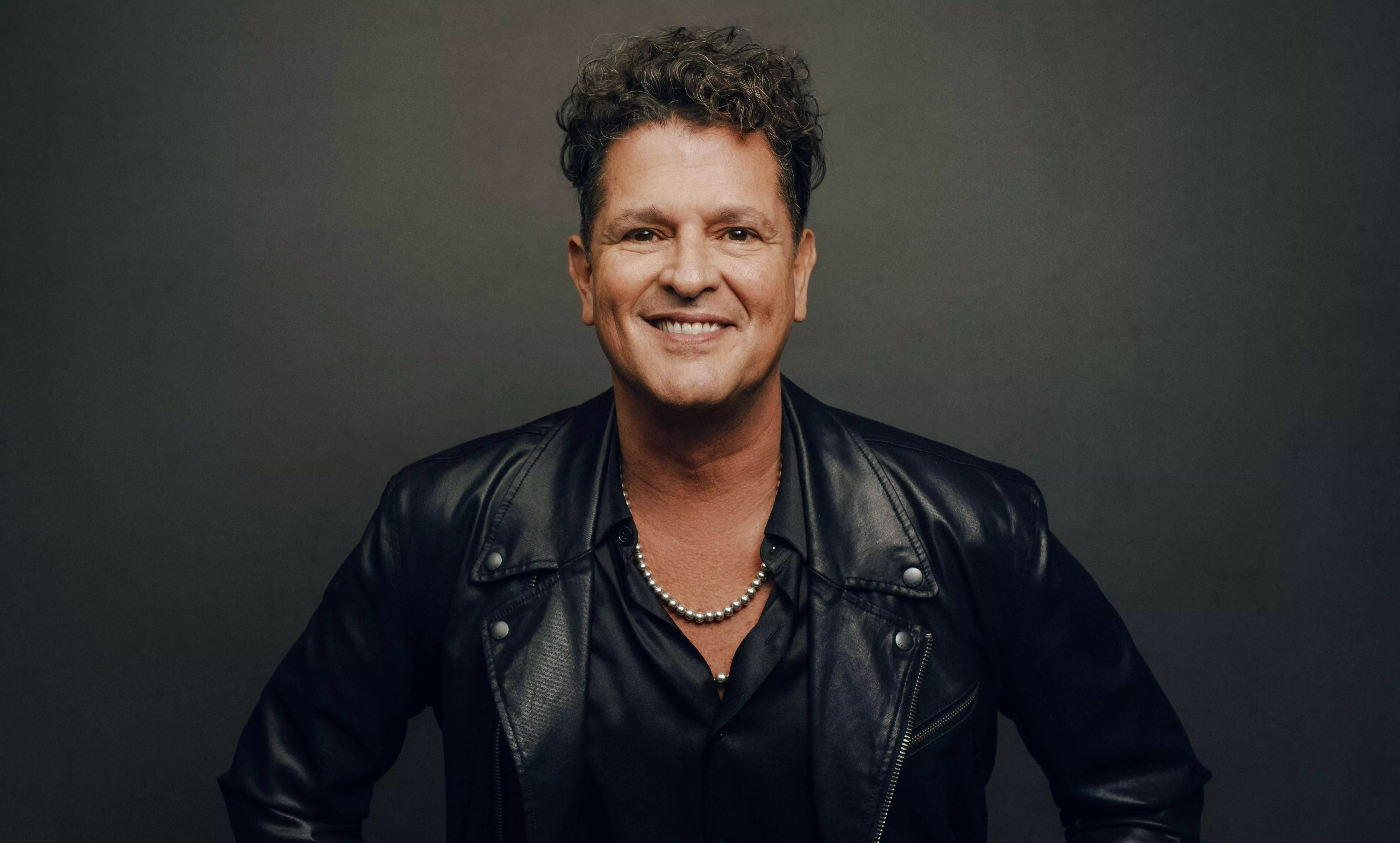
Carlos Vives Named The 2024 Latin Recording Academy Person Of The Year: What To Know About The Latin Music Icon
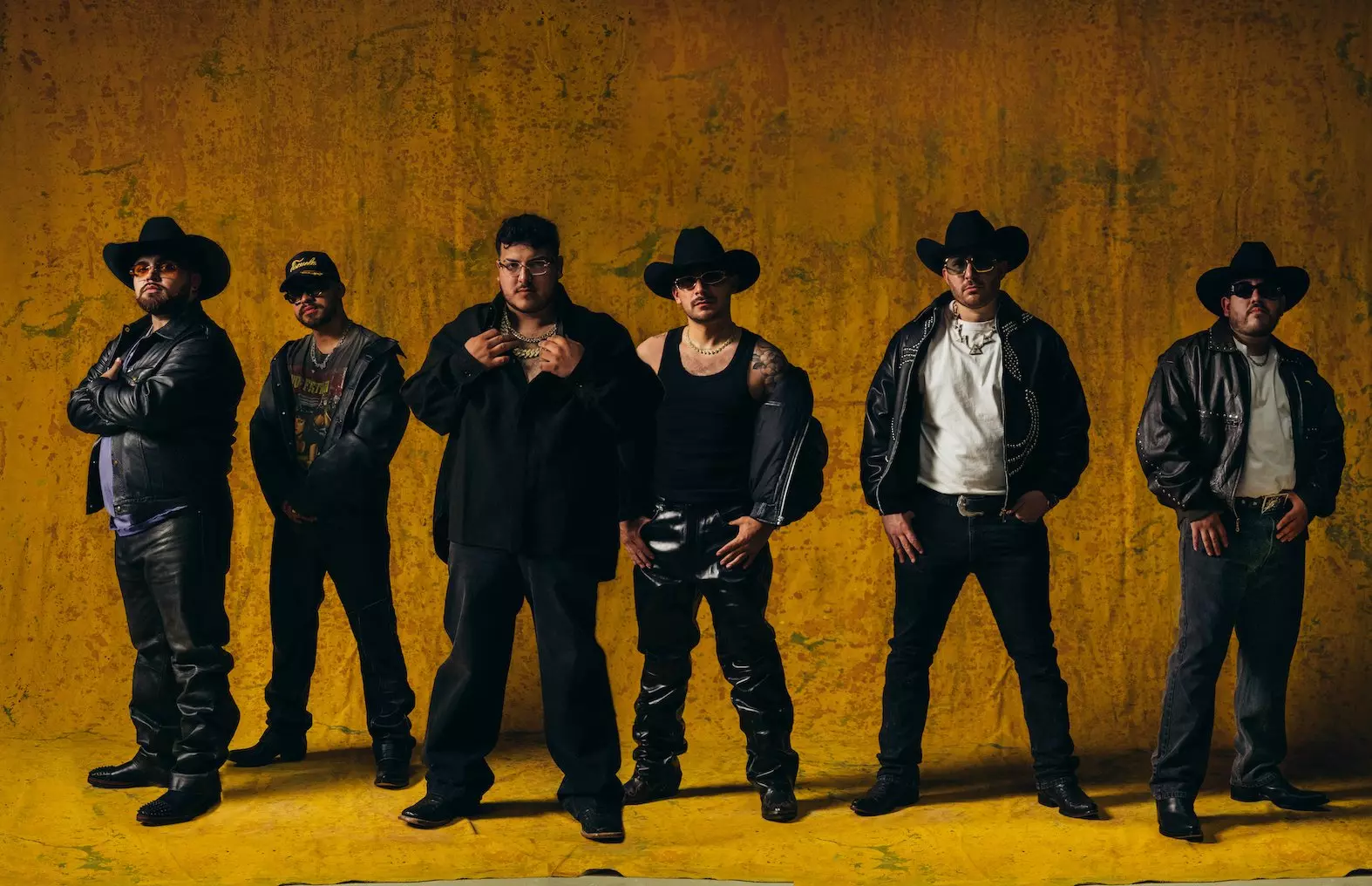
Grupo Frontera On 'Jugando A Que No Pasa Nada' & Fully Expressing Themselves: "This Album Was Made From The Heart"

5 Artists Leading A New Wave Of Latin Trip-Hop & Downtempo: Céu, Natalia Clavier & More
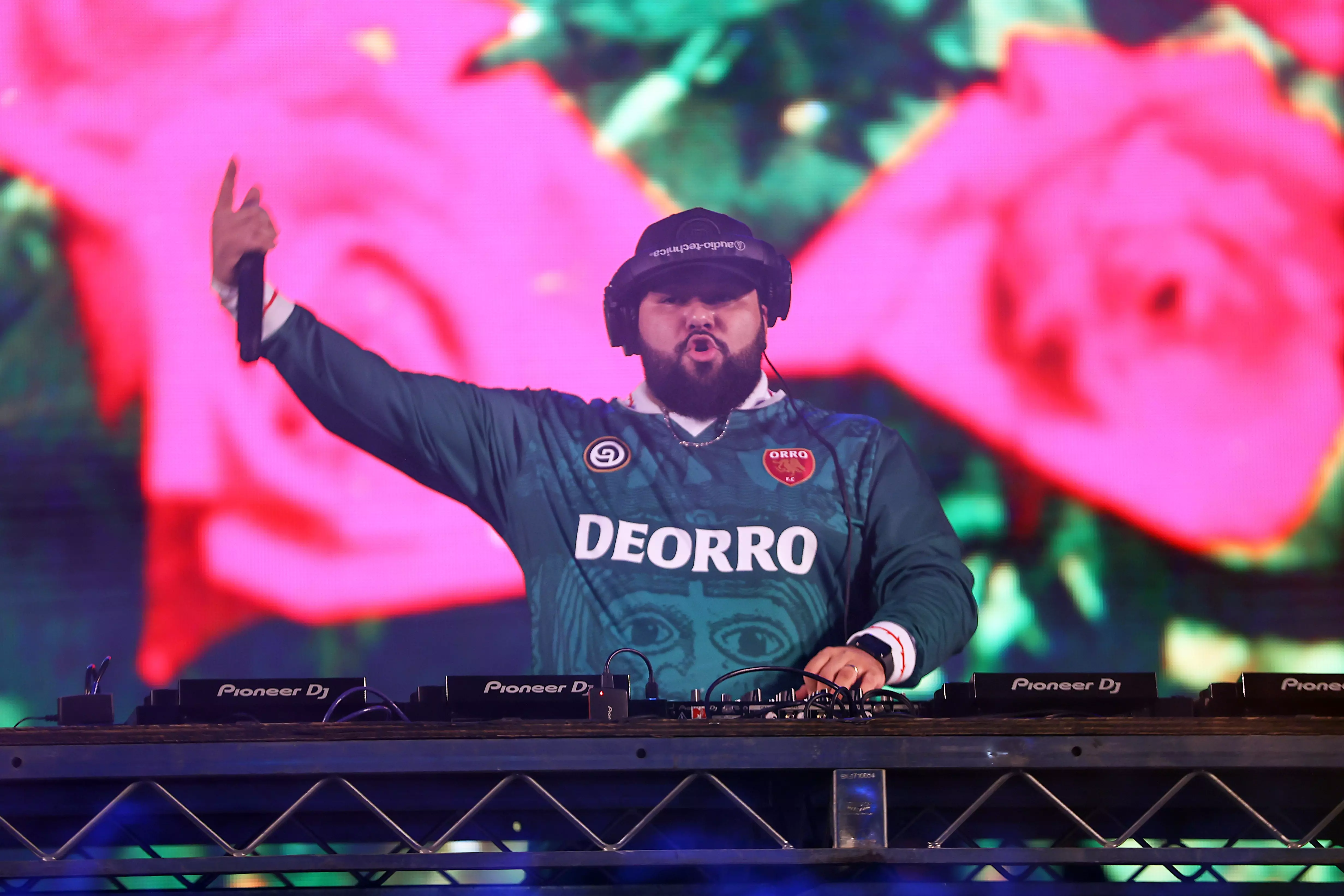
8 Essential Latin Electronic Releases: Songs And Albums From Bizarrap, Arca & More
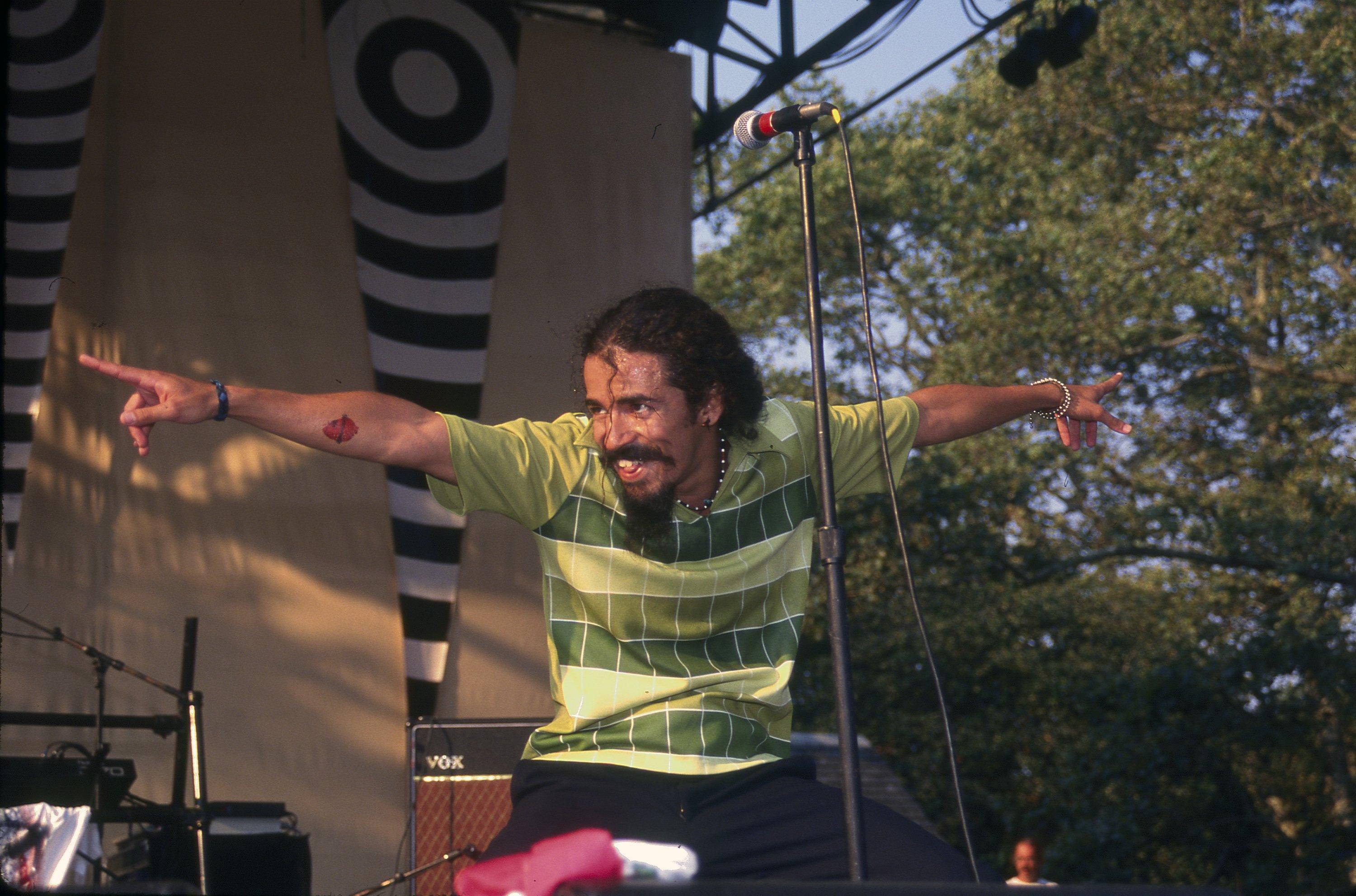
Photo: Bill Tompkins/Getty Images
feature
Revisiting 'Re': How Café Tacvba’s 1994 Masterpiece Changed Mexican Music Forever
Released on July 22, 'Re' saw the experimental rock en español group tackle themes of identity, death and national pride over a sprawling double album. On its 30th anniversary, consider Café Tacvba's landmark for Mexican rock opus.
Let’s not bury the lede here: Café Tacvba’s Re is one of the pantheon rock albums in the Spanish language. And arguably one of the greatest rock albums in any language.
Since its release 30 years ago on July 22, it’s been held up as one of the most ambitious and eclectic albums of its time, elevating the standard by which almost every rock en español band would be held to ever since — including its own creators. As a song cycle, Re is a whirlwind, with genre exercises and mini-suites scattered seemingly at random. Many pop critics liken its sonic diversity to the Beatles’ White Album, which is true if you’re just counting musical styles. But whereas the Fab Four were indulging their personalities within the group context, Café Tacvba conveyed solidarity in putting together an almost sui generis collection of madcap melodies.
As a whole, Re was a great leap forward for Latin American rock music, and a landmark for Mexican music in general.
It's important to consider the context of Café Tacvba in 1994. Despite its large population and long history as a Latin American cultural center, Mexico City lagged in establishing serious rock acts aside from outliers such as El Tri. Part of this is due to the politics of the age — including the Mexican government’s notorious crackdown on public rock concerts after several clashes between rock fans and police during the '70s — leaving the majority of Mexican rock bands resigned to playing in shady, underground clubs.
However, the 1980s saw the birth of BMG’s "Rock de tu Idioma" marketing blitz, and Mexican record companies finally began to put efforts into finding a national equivalent to South American-born stadium bands like Soda Stereo and Los Enanitos Verdes. On their second album, El Circo, Madilta Vecindad brought Mexico City to the forefront of the modern rock en español movement with their innovative mix of rock n’roll and ska crossed with pachuco subculture. Other bands that emerged around this time — from the gothic Caifanes (whom the band is currently touring with across the United States) to the arena rockers Maná — began building large audiences across the continent, but the scene still lacked a singular act that could elevate Mexican rock to the forefront.
Enter los Tacvbos. Aligning based on their shared passion for English new wave music, Café Tacvba was formed in the late '80s by college friends Rubén Albarrán and Joselo Rangel, who would serve as vocalist and guitarist, respectively. In time, they were joined by Joselo’s brother (and bassist) Quique and the multi-instrumentalist Emmanuel "Meme" de Real, choosing to name their band after a historic Mexico City café. Café Tacvba spent the late '80s evolving from a college garage band into one of Mexico’s most exciting live acts. After the release of their seminal 1992 self-titled debut — a frantic collection of ska-punk mayhem and colorful pop songs — expectations were high that the band could deliver a follow-up that would mirror their electric live show. What the band delivered would end up altering the entire scene completely.
Re is impactful and unique for many reasons, the first and most immediate being its adventurous studio production. Working again with rock en español superproducer Gustavo Santaolalla, Café Tacvba decided against continuing with the ska-punk foundations of El Circo and their own debut and embraced their own eclecticism. You can hear it from the jump with the huapango-via-jarana opening chords of "El Aparato," a sound previously unheard of on a pop record. Within its three-and-a-half minute runtime are layers of percussion and synthesizers complemented by glorious indigenous chants and one of Albarrán’s greatest vocals, rising and falling as the song demands. The movement in the final 45 seconds is ethereal, with its sheer sonic force sounding more apropos for the end of the world than the beginning of a double album.
Santaolalla revealed to Rolling Stone that he challenged the band, who responded with two batches of new songs for a sprawling double disc. Re is where a song like the sophisti-funk of "El Ciclón" is followed by two minutes of unadulterated thrash in "El Borrego." "24 Horas," meanwhile, mixes Beach Boys harmonies, Latin American lounge music, and post-punk beats. And that’s not even getting to the pure WTF of "El Puñal y El Corazón," with its multiple sections finding the middle ground between Pedro Infante and the Beatles, albeit with a merengue coda thrown in.
Perhaps the best testament to Santaolalla's production is "El Baile y El Salon," Re’s most popular song (and frequent concert encore for the band). It’s one of a string of great duets from Albarrán and Meme, perhaps the most earnest song in the band’s catalog with sweetly sincere lyrics. Santaolalla lets the music aid the storytelling: Meme’s vocals ride against stomping percussion and a grooving bass line, while Albarrán sings against a wave of synthesizers. In lesser hands, the song would be an easy paint-by-numbers arena rock anthem. Thankfully, Café Tacvba leaned into their own indulgences, and came out with something immortal.
Another important theme across Re is the band’s sense of discovery for their home country. Indeed, one of Café Tacvba’s intentions for Re was to showcase the sounds that they heard while touring through Mexico in support of their debut album. As Albarrán told the podcast "La Vida Circular," the band wanted to deepen their relationship with traditional Mexican music and infuse it with the punk, metal, and funk rock that they were already experimenting with.
The most striking example comes in the form of lead single "La Ingrata." With a bouncy rhythm and tweaked time signature inspired by norteño, the song is a common tale of desperation and heartbreak with a spiteful edge bled over from Café Tacvba’s punk roots. The fan favorite is also one of the band’s most influential songs, as it presaged a number bands combining norteño and alternative music — from Tijuana’s Nortec Collective at the turn of the century, to the contemporary corridos tumblados resurgence. Café Tacvba decided to stop performing the song in concert in 2017, due in part to the harsh lyrics about its female subject, and the escalating waves of violence against women within Mexico during this period. Albarrán noted around that time that "We were very young when it was composed and we were not as sensitive to this problem as we all are now."
Re did not sell well in Mexico upon release, though the band fermented interest during a sold out tour of Chile and Argentina. This, along with exposure from the recent launch of MTV in Mexico, was the major catalyst for the album’s fortunes taking an upturn. As the Mexican music listening public soon gathered, Re had something for everyone: From the smooth bolero of "Esa Noche," the frenetic banda of "El Fin de la Infancia," and the glittery Mexican pop of "Las Flores." Lyrically the band was speaking to its compadres, most notably on "El Metro," a bizarre short story of a lovelorn man trapped inside the Mexico City subway.
Despite its madcap sound and unabashed orgullo Mexicano, Re’s deepest theme is about the cyclical nature of life. There’s an obvious hint to it within the album art’s spiral conch shell, and more allusions in the song title "El Ciclón" and the reflexivity of "Pez" and "Verde," which bleed in-and-out of each other.
But dig deeper and the album is rife with references to life, death, rebirth, and natural law. "Ixtepec" sounds like a buoyant pop number but is really a cryptic tale about Death coming to collect his bounty, underlined with the refrain that "life is a cycle." Multiple songs, including "Trópico de Cáncer" and closer "El Balcón," reference reclamation of their birth land from the conquistadors, with the former song in particular telling a heartbreaking story of a civil engineer encountering the ecological damage to which he’s complicit. And there’s also the understated elegance of "El Tlatoani del Barrio," which recounts a love story in a pre-Columbian world soundtracked by Indigenous chants and a disco boogie.
Unlike many bands in a similar position, Café Tacvba never tried to replicate the magic of Re. Their next release was the covers album Alalancha de Éxitos, itself born out of their label’s reaction about Re’s lack of commercial hits (this bet paid off; the album was nominated for Best Latin Rock/Alternative Performance at the 40th GRAMMY Awards). Their visionary, hyper-experimental 1999 release Revés/Yo Soy, solidified their critical standing by winning a Latin GRAMMY for Best Rock Album and earning a GRAMMY nod. Today, it's a cult item currently unavailable on any streaming service due to label in-fighting.
After the turn of the century came Cuatro Caminos, a much more traditional sounding rock album, which led them to new critical and commercial heights, including their only GRAMMY win for Best Latin Rock/Alternative Album, and their career ever since has seen them find their groove as the thinking person’s favorite Mexican rock band. But within their exceptional catalog, Re remains a glorious outlier.
Even if Café Tacvba had never released another record after Re, their legacy would have remained secure. Re was among the major catalysts for the second wave of Mexican alterna-rock, which saw the likes of Julieta Venegas and Kinky elevating the genre with new sounds and perspectives. All modern rock owes a debt to the freewheeling spirit of Re, and the album’s continued influence and critical accolades are proof-positive of that.
In a sense, it’s almost poetic that Café Tacvba — a band formed through their shared idolization of David Bowie, the Clash, and the Cure — ended up proving to be as essential and venerable to rock history as any of their influences.
The Latest News About Latin Music

Nelly Furtado On How Remix Culture, ADHD & Gen Z Inspired Her New Album '7'

Carlos Vives Named The 2024 Latin Recording Academy Person Of The Year: What To Know About The Latin Music Icon

Grupo Frontera On 'Jugando A Que No Pasa Nada' & Fully Expressing Themselves: "This Album Was Made From The Heart"

5 Artists Leading A New Wave Of Latin Trip-Hop & Downtempo: Céu, Natalia Clavier & More

8 Essential Latin Electronic Releases: Songs And Albums From Bizarrap, Arca & More
.jpg)
Photo: Zeus Lopez
feature
Revisiting 'El Nervio Del Volcán' At 30: How Caifanes' Final Album Became A Classic In Latin American Rock
Released in June 1994, 'El Nervio Del Volcán' was a high point of the rock en español explosion and a serious evolution in the Mexican band's sound. Decades after its release, GRAMMY.com explores the story behind and impact of Caifanes' legendary LP.
As its title suggests, the final album from iconic Mexican rock band Caifanes heralded an explosive new evolution in hybrid rock. El Nervio Del Volcán ("nerve of the volcano" in English), was the culmination of a years-long quest by the band to alchemize modern rock and Latin American music.
Released June 29, 1994, El Nervio Del Volcán represents a high point of Mexico’s rock en español explosion. The 11-track album — the band's fourth release — saw Califanes continuing to explore the sounds of Mexico and Latin America, while broadening their sonic palette with jazz and country.
Since their formation in 1987, Caifanes had been working to refine a sound that was both commercially successful, highly original, and beloved by critics and fans alike. For their efforts, El Nervio became the second Spanish-language rock album to chart on the Billboard Latin 50. Rolling Stone, which rarely gave Spanish-language music column inches, gave the album a glowing review. Caifanes became the first Mexican band to play on MTV’s "Unplugged" in October 1994. The next year, they opened for the Rolling Stones in Mexico City.
While Caifanes might have been the leading band of Mexico’s rock en español movement, they were part of a cohort that included bands like Café Tacuba, Maldita Vecindad, and Fobia — which were experimenting with new fusions of traditional Latin American and rock sounds. Caifanes was at the vanguard of the Mexico City-centric movement, and El Nervio showcased the band's skill in developing "strong hits, and experimental things, which I think kind of worked," music journalist Ed Morales tells GRAMMY.com.
In an interview, Mexican rock historian Federico Rubli calls the record "a very important album, that maybe in its time wasn’t sufficiently appreciated. Even today, 30 years later, it’s difficult to recognize how great a work it was." If the crossover success weren't appreciation enough, El Nervio is notable for the way in which it set a high standard in songwriting and production for other bands that followed.
Caifanes was daring beyond their sonic experimentation. Like most Mexican rock bands at the time, their music was prohibited from being played on the radio and they risked arrest for performing. By the time of their first concert at the legendary Rockotitlan festival in Mexico City in 1987, though, there was no stopping what would soon become a new rock movement. The following year, they broke through the government’s music blockade when their first single, "Mátenme Porque Me Muero" ("Kill me because I am dying"), hit the airwaves.
The follow-up single, "La Negra Tomasa," a post-punk inflected cumbia rocker that became a smash hit across the country, selling a record 500,000 copies. Their self-titled debut album was released shortly thereafter, with the band members looking like extras from a movie about goth subculture on the cover. Their third album, 1992’s El Silencio, found the band more musically confident than ever before. Producer Adrian Below — the former guitarist and frontman of King Crimson who had also played with David Bowie and Talking Heads — helped the band expand their musical palette with "cotton-candy high notes, rumbling ocean rhythms with upsurges that bellows like sea elephants," music critic Chuck Eddy wrote.
Everything changed for the rock en español movement in 1993, when the pop-rock outfit Maná, which played a syrupy mix of tropical-influenced music, sold a million copies of its second album, ¿Dónde Jugarán Los Niños? Record labels were suddenly pursuing the next hit-making Latin band and BMG, which had signed most of the major rock en español bands, considered Caifanes its star rockers.
The band had fractured as they prepared to go back to the studio, with original bassist Sabo Romo and keyboardist Diego Herrera leaving the group. With the increased backing by their label, the trio of lead singer/songwriter and guitarist Saúl Hernández, Argentine-born guitarist Alejandro Marcovich, and drummer Alfonso André traveled to Burbank, California, to record El Nervio Del Volcán GRAMMY-winning producer Greg Ladanyi (known for his work with Toto, Fleetwood Mac, and The Church) was brought into the O’Henry Sound Studios, along with a few special guests. Famed trumpeter Jerry Hey (known for his work on Michael Jackson’s "Thriller") and Graham Nash both appear on El Nervio.
The songs that Hernández largely wrote and that the other band members would coalesce around were heavily influenced by Mexican folkloric sounds, though Marcovich in particular introduced a variety of Latin American sounds with his guitar. Throughout El Nervio, Caifanes flows effortlessly between genres: a bit of rustic son huasteco ("La llorona"), jolts of metal ("El Animal"), and Caribbean rhythms ("Aviéntame").
Rubli tells GRAMMY.com that the album was notably different from the band’s previous releases, largely due to Marcovich being given leeway with the guitar arrangements. "El Nervio Del Volcán is a much more rounded album, more integrated, with a sequence in each song that is, you might say, more logical," he says in Spanish. "And a lot of that is due to the liberty that Alejandro had to arrange them as he wanted."
Soul-stirring anthem "Afuera" was an unusual choice for a lead single — it features an instrumental guitar interlude that lasts for more than a minute — but proved brilliant. Even Markovich, the guitarist who wrote the interlude, was dubious about its commercial potential.
"I never could have imagined it would be a single," he said in 2022 on the podcast "Cuéntame Un Disco." "I even told the record company that they might want to do a more radio friendly version without it, but they left it and it worked."
Today the song is popular among musicians on YouTube precisely because of its interlude.
Second single "Aqui No Es Asi" was also a hit. Marcovich, again on the podcast, said he was writing melodies on the guitar when he found an unusual rhythm "between Caribbean and Andean." "It was a strange mix," he said.
Hernández has been called the "poet laureate of Mexican rock," and has often weaved social themes and indigenous mysticism into the lyrics of his songs. In the propulsive "Aqui no es asi," Hernandez obliquely refers to two different places — one materialistic and out of touch with spirituality, and the other a land "where blood is sacrificed for love." The song has been interpreted as a criticism of Eurocentric values that have marginalized more indigenous ones.
The album slows down considerably with the acoustic, melancholic hymn "Ayer me dijo un ave." Now one of the band’s signature songs, the song is about strength in the face of adversity. Its lyrics are heavy with surrealistic imagery: "Yesterday a bird told me while flying where there is no heat," Hernández sings. "That the long-suffering are not resurrected in dreams."
Many of the other songs have become classics in Mexico and among Spanish-speakers in the U.S. Highlights include the full-throttle tropical-tinged "Aviéntame"; "Pero Nunca Me Caí," which features Nash on harmonica; and "Quisiera Ser Alcohol," a jazz-influenced lament with trumpet from Hey and a sumptuous fretless bass from guest Stuart Hamm.
More Sounds From Latin America & Beyond

7 Artists Bringing Reggaeton Mexa To The World: El Malilla, Bellakath & More

Nelly Furtado On How Remix Culture, ADHD & Gen Z Inspired Her New Album '7'
.webp)
Revisiting 'El Nervio Del Volcán' At 30: How Caifanes' Final Album Became A Classic In Latin American Rock

Carlos Vives Named The 2024 Latin Recording Academy Person Of The Year: What To Know About The Latin Music Icon

Grupo Frontera On 'Jugando A Que No Pasa Nada' & Fully Expressing Themselves: "This Album Was Made From The Heart"
Rafael Catana, an influential folk-rock musician in Mexico City who has hosted a music show on government-funded radio since 1997, says Caifanes' last album "arrived at a crucial moment in Mexican history" when the country was undergoing a massive social and economic transformation. Both sonically and in its production, El Nervio reflected the conflict between Mexico's interest in transnational capitalism and its underclass.
In the early 1990s, elites had opened the country to a flood of foreign corporate investment with the North American Free Trade Agreement. On Jan. 1, 1994, an armed indigenous uprising against those policies by the Ejército Zapatista de Liberación Nacional challenged the government unlike any other group had attempted in decades. (Security forces had warned against political dissidence when they massacred student protesters in Mexico City in 1968 and launched a dirty war to round up "subversives" and marginalize the counterculture, including rock bands).
While El Nervio doesn’t explicitly mention any of these historical points, it is clearly a product of the era, filled with evocations of Indigenous musical traditions despite being produced by a major corporate label. During the tour in support of the album, the band made it clear that they were on the side of Mexico’s most oppressed class, with footage of Indigenous villages and archeological sites shown during their concerts. Hernández would sometimes call on audiences to support Mexico’s native people.
Backstage, the relationship between Marcovich and Hernández became impossible and contributed to the breakup of the band. The rupture between them would become a subject of headlines in the media. Though the exact details of their conflict remain vague, the band played their final show on Aug. 18, 1995, in San Luis Potosí. A legal dispute over the name Caifanes endured for years.
By the time Caifanes broke up, rock en español was entering a new phase led by the indie-folkloric experimentation of Café Tacuba. Other musical trends also started emerging: the rap-rock of Molotov, the electro of Plastilina Mosh, the commercial explosion of Juanes' tropical pop, the Caribbean alternative rock of Aterciopelados.
In the interim, Hernandez formed a new band with André. Their Jaguares channeled a more aggressive sound, and their 2008 album 45, took home a golden gramophone for Best Latin Rock or Alternative Album at the 2009 GRAMMYs. In 2011, the original members of Caifanes reunited to play Coachella.
But the truce between Hernández and Marcovich didn’t last, and the guitarist once again left the band. A reunited Caifanes, with original members Hernandez and André, are on tour in 2024 with fellow Mexico City rockers Café Tacuba.
Mexican music journalist David Cortes, who has written several books on Latin American music, said the band was at their creative peak with El Nervio Del Volcán and had established a striking balance between traditional music and foreign sounds. Ultimately, though, the break-up of the band limited its influence over the years.
"They wanted to go further," he says in Spanish. "And there are hints of where they might have gone."
Latest News & Exclusive Videos

Matthew West Performs “Don’t Stop Praying”

7 Artists Bringing Reggaeton Mexa To The World: El Malilla, Bellakath & More

Revisiting 'Re': How Café Tacvba’s 1994 Masterpiece Changed Mexican Music Forever

5 Artists Who Graduated From GRAMMY Camp: Chappell Roan, Maren Morris, Blu DeTiger & More
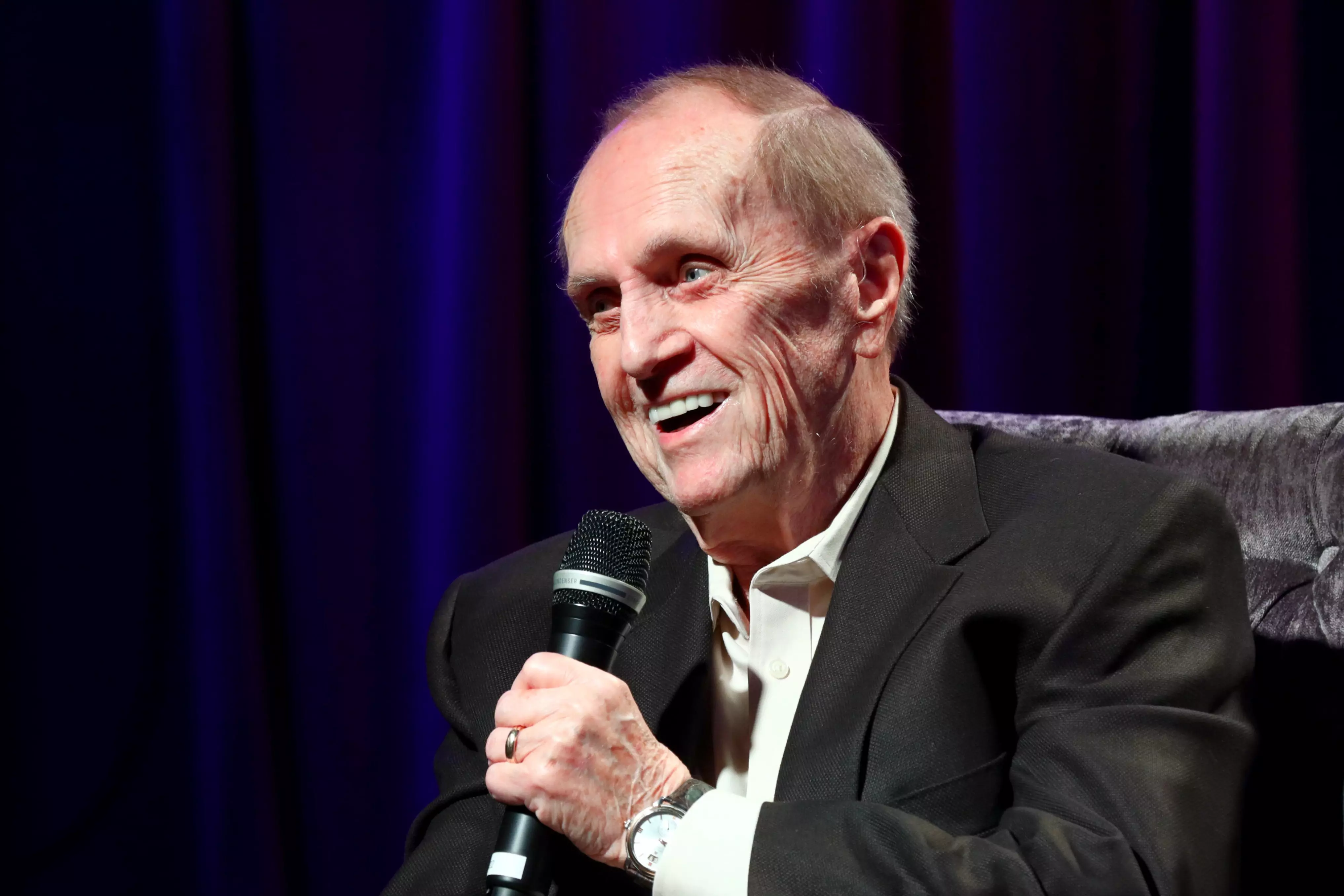
Remembering Bob Newhart, The Comic Who Made GRAMMY History With His Debut Album

Photo: Arenovski
feature
Peso Pluma's Road To 'ÉXODO': The GRAMMY Winner Navigates The Consequences Of Global Stardom On New Album
"Fans really get to see the other side of the coin; there are two sides to me. It's darker, rawer," Peso Pluma says of his latest album 'ÉXODO'
Peso Pluma marked his musical destiny with a Tupac tribute tattoo in the center of his clavicle: "All Eyez On Me."
The Mexican artist, born Hassan Emilio Kabande Laija, doesn't remember exactly what year he inked his chest. He knows it was well before his debut in music. Those four words reflected Peso's irrefutable confidence that the world's eyes would eventually be on him.
The world's eyes are indeed on Peso Pluma. In less than two years, the singer achieved global fame by singing corridos tumbados, traversing a path never before trodden by a música Mexicana artist.
At 25, Peso Pluma is at the forefront of a new generation of música Mexicana artists that have successfully modernized traditional Mexican rhythms, such as corridos, by infusing them with elements from urban music and a hip-hop aesthetic. The weight of representing an entire genre and a country could be great for some. But pressure doesn't affect Peso Pluma; on the contrary, it motivates him to keep working to exalt his roots.
"We've come a long way, but we still have a long way to go. And that doesn't mean we have to slow down; it doesn't mean everything is over. This is the beginning of everything," Peso Pluma said in a TikTok video before a performance at the Toyota Arena in Ontario, Canada, a little over a year ago.
Out June 20, Peso's extensive new album ÉXODO seeks to cement his global star status further. Over 24 tracks, the singer continues to explore corridos tumbados and digs into his urban side via much-awaited collaborations with reggaeton and hip-hop icons. Among those big names is Peso's teenage idol, the American rapper and producer Quavo, as well as further afield collaborations with Cardi B.
"ÉXODO is a project I've been working on for over a year before we even won the GRAMMY. GÉNESIS was an incredibly special project, and I knew we couldn't make the same diamond twice," the singer tells GRAMMY.com in a written interview.
Peso Pluma's path to the global stage has been lightning-fast. While he started releasing songs in 2020, Peso will remember March 2023 as the month that propelled him into global mega-stardom. His collaboration with Eslabón Armado on "Ella Baila Sola" led him to become a household name outside his native Mexico.
The hit resonated with an audience eager for new sounds, accompanying social media videos and surpassing a billion streams on Spotify. "Ella Baila Sola" became the first Mexican music track to top the platform's global chart. On Billboard, it conquered No. 1 on the magazine's Global 200 chart for six weeks and reached the coveted No. 4 spot on the Hot 100 chart. The mega-hit took Peso Pluma and Eslabon Armado to make their Latin GRAMMY stage debut in November with an electrifying performance.
Another collaboration, "La Bebe (Remix)" with Mexican reggaeton artist Yng Lvcas, released a day after "Ella Baila Sola," also contributed to Peso Pluma's virality in a completely different genre, but one in which he feels comfortable: urban music.
Learn more: Peso Pluma's 10 Biggest Collabs: From "Bzrp Sessions" To "Ella Baila Sola" &"Igual Que Un Ángel"
As Peso Pluma gained traction with a global audience, his February 2022 single with Raúl Vega, put him, for better or worse, on the map in Mexico. The warlike content of "El Belicón" lyrics and video clip attracted attention for the way it allegedly promoted narcoculture.
Despite growing criticism, Peso Pluma remained tight-lipped regarding references to high-profile members of the Mexican drug trade, as well as drug use and trafficking. In a rare admission to GQ magazine, the singer explained this is a "delicate subject to talk about, but you have to touch on it with transparency — because it's the reality of things."
"In hip-hop, in rap, just like in corridos, and other urban music like reggaeton, it talks about reality. We're not promoting delinquency at all. We're only talking about things that happen in real life," the singer explained.
With the success of "El Belicón" and "Ella Baila Sola" under his belt, Peso Pluma released GÉNESIS in June 2023. Despite being his third album, Peso considers it his true debut in music.
"I didn't want to delete my previous albums [Efectos Secundario and Ah Y Que?] because they represent my beginnings," Peso told Billboard in a cover story published a few weeks after the release of GÉNESIS. In the same conversation, the singer said he saw himself winning his first GRAMMY and breaking more records.
Read more: 5 Takeaways From Peso Pluma's New Album 'GÉNESIS'
In February 2024, Peso Pluma did just that. He took home the golden gramophone for Best Música Mexicana Album (Including Tejano) — his first GRAMMY Award. This victory didn't weigh on him as he approached his next production. "It pushed me to want to create something different that the fans haven't heard from me before," Peso Pluma tells GRAMMY.com.
While GÉNESIS and ÉXODO may differ in substance, they share similarities beyond music. That both records pull from the Bible for their names is not a random occurrence; the opening book of the Hebrew and Christian Bible delves into the genesis of creation, while the Book of Exodus explores the themes of liberation, redemption, and Moses' role in leading the Israelites through the uncharted waters of the Red Sea.
"ÉXODO is the continuation of GÉNESIS, which was the beginning," Peso Pluma explains to GRAMMY.com. "ÉXODO means new beginnings, a new era for me. We are preparing for the next chapter, and that's what we are doing for Mexican music, paving the way, laying the groundwork for what's next because it doesn't stop here."
His "sophomore" album is divided into two discs: the first is corridos, and the second is urban. It also continues the line of collaborations, with twenty tracks where Peso Pluma shares the limelight.
"Some of my fans were craving música Mexicana, and some were craving urbano, and I wanted to give them everything while still staying true to myself and choosing songs and lyrics that spoke to me," he continues.
ÉXODO's disc one starts with "LA DURANGO," the album's fourth single, featuring Eslabon Armando and Junior H. In the record, he also invites collaborators such as Natanael Cano and Gabito Ballesteros for "VINO TINTO" and Mexican rising star Ivan Cornejo on the melancholic "RELOJ," among others.
For Side B, Peso enlisted heavyweights from the urban genre in the Anglo and Latin markets: Anitta in the steamy "BELLAKEO," Rich The Kid in the bilingual "GIMME A SECOND," and Quavo in the existential trap "PA NO PENSAR." Cardi B, Arcángel, Ryan Castro, Kenia OS, and DJ Snake complete ÉXODO's genre crossover.
In ÉXODO, luxury, drugs, alcohol, and women continue to take center stage in the lyrics, accompanied by fast-paced guitar-driven melodies and reverb-dense vocals. However, the production sheds light on the vulnerable side of Peso and explores the unexpected consequences of becoming globally famous.
"Fans really get to see the other side of the coin; there are two sides to me. It's darker, rawer," Peso says about the record.
In the songs "HOLLYWOOD" and "LA PATRULLA," for example, Peso details how this musical path keeps him up at night, as well as his aspirations, and how he remains the same despite his success.
Perhaps one of the deepest and rawest songs on the album is "14:14," a track inspired by the Bible verse 14:14 from the Book of Exodus, which, the singer explains, was fundamental amidst the turbulence he faced on the way to global stardom.
"[The] verse 14:14 says 'The LORD will fight for you; you need only to be still.' This verse couldn't be truer," Peso Pluma says. "Over time, I learned to really trust in this and believe that some things are not up to me and I should trust the process."
In the song — one of the few on the album without a collaboration — Peso references the challenges of his profession and how his faith has kept him afloat amid the vicissitudes. "Things from the job that no one understands/I hide the rosary under my shirt so I don't poison myself, so I don't feel guilty/because whatever happens, the Boss will forgive me," he sings.
In "BRUCE WAYNE," Peso Pluma croons about the passionate feelings his career arouses: "First they love you, and then they hate you/wishing the worst, envy and death," the song says.
The singer resorts to comparing himself to a superhero figure again. In an unusual twist, Peso crosses comic universes, moving from his now traditional reference to Spider-Man to one from the DC Comics world: Bruce Wayne, Batman's secret identity. A wealthy man, part of Gotham's high society, Bruce Wayne is known for transforming his darkness into power while remaining reserved and isolated.
"Everyone has two sides of them, even me," Peso tells GRAMMY.com. "Peso Pluma on stage is a high-energy person, someone who is powerful and dominates a show and isn't afraid of anything. And then there is Hassan, who's chill and more relaxed and who deals with all the realities of life."
During the year and a half it took him to complete ÉXODO, Peso Pluma had to deal with the diverse nuances of a global star's life, including a widely publicized breakup from Argentine rapper/singer Nicki Nicole, the cancellation of one of his shows in October 2023 after a Mexico drug cartel issued a death threat against him, and a media frenzy over his alleged admission to a rehabilitation clinic, the latest a rumor he laid to rest during a March interview with Rolling Stone for his Future of Music cover story.
"The reality is, all these days, I've been in the studio working on ÉXODO," the artist explained to Rolling Stone.
Most of 2023 was a successful balancing act for Peso Pluma, who combined touring, an album release, rare media engagements, two Coachella appearances, all the while developing another record. According to the singer, ÉXODO was created in Los Angeles, Miami, New York, and Mexico. "We go to the studio everywhere!" Peso says. "It doesn't really matter where we are; I love to get into the studio and work when we have free time."
Like GÉNESIS, ÉXODO will be released via Peso Pluma's Double P Records, of which he is the CEO and A&R. Much of the talent the Mexican singer has signed to his label took part in the album's production, and songwriting process.
"For the Mexican music side, I had the whole [touring] band with me; I like to have them involved in the process so that we can all give our input on how it sounds, discuss what we think needs to be changed, create new ideas," he explains.
Peso Pluma knows that echoing the success of 2023 is no easy task. He was the most streamed artist in the U.S. on YouTube, surpassing Taylor Swift and Bad Bunny, and was the second most-listened to Latin artist in the country, amassing an impressive 1.9 billion streams, according to Luminate.
Música Mexicana emerged as one of the most successful genres in 2023, witnessing a remarkable 60 percent surge in streaming numbers, adds Luminate's annual report, crediting Peso Pluma along Eslabon Armado, Junior H, and Fuerza Regida as part of this success.
Collaborations on and off the mic have undoubtedly played a significant role in the rise of Música Mexicana on the global stage. Peso knows that the key to continuing onward is teaming up with renowned artists inside and outside his genre.
"All of us coming together is what pushed música Mexicana to go global," the singer affirms. "We showed the world what Mexico has to offer, and now no one can deny the power and talent we have in our country."

Photo: Shervin Lainez
interview
Angélica Garcia's Intuition: How 'Gemelo' Was Born By Embracing L.A., Ancestry & Spanish Language
When creating her new album, 'Gemelo,' Angélica Garcia relied on her "spirit self" for guidance. The Los Angeles native details how she arrived at her first Spanish-language release by following her intuition and embracing her family history.
Early in the spring of 2020, Angélica Garcia felt like she was being called back home. The singer/songwriter had spent the last three years in Richmond, Virginia, but her roots were firmly planted in California.
She’d spent most of her life in El Monte — the city in the San Gabriel Valley just 20 20 minutes east of downtown L.A., where she was raised by her parents and grandparents. (Her mother, also named Angélica, was a singer who had grown up performing rancheras with her siblings at rodeos around L.A. and Mexico.) Angélica spent most of her childhood moving around the city, learning how to fit in each time she enrolled in a new school. At 17, she followed her parents across the country to Accomac, Virginia — a tiny rural town on the state’s eastern shore.
"It was challenging, but I tried to always see the positive side of those experiences," she tells GRAMMY.com. "In some ways it was like traveling back in time to live there, but I also just thought, Wow, this is a whole different culture that I get to be a part of."
After high school, she moved to Richmond and fell into the city’s indie scene, performing in several bands while recording and releasing her own solo music. Her semi-autobiographical track "Jícama" made it onto President Obama's 2019 year-end music list, giving her a boost of recognition just before she released her 2020 album, Cha Cha Palace. The album was a celebration of her Salvadoran-Mexican heritage, bursting at the seams with influences from across the Latin American diaspora, merging cumbia, ranchera, and reggaeton with psychedelic rock and pop.
Just before the pandemic, Garcia felt as if she "was being called to start over in L.A." With COVID-forced closures throughout the city, it wasn’t quite the return Garcia had hoped for. It did, however, present an opportunity for grounding and reconnection — not just with Garcia's hometown, but with roots, culture, and voice.
She turned inward, dredging up gnarled, complicated feelings about her identity. She’d started to find success writing music that she felt deeply connected to, but Garcia was also grappling with the realization that it was written in a language neither of her grandparents spoke. She turned to poetry, trying to work through her feelings of grief and disconnect.
Slowly but surely, those words became the first inklings of Gemelo. Produced by Chicano Batman’s Carlos Arévalo, the 10-track album explores duality and belonging, following Garcia’s journey of acceptance from the ethereal musing of opener "Reflexiones," to the wild joy of closer "Paloma."
Her first album sung almost entirely in Spanish, Gemelo is Garcia triumphing over her doubts, following her intuition into an otherworldly pop soundscape that transcends borders.
Ahead of her upcoming tour dates opening for IDLES, Garcia spoke with GRAMMY.com about processing grief, writing in Spanish, and finding inspiration in her ancestors.
This conversation has been condensed and edited.
What inspired your move back to California?
I loved living in Richmond, but I was having a really hard time towards the end. Moving kind of felt like something that I had to do. That was one of the difficult things that I was navigating around the time of writing Gemelo.
The album touches on the concept of grief and loss, but also discovery. What was going on in your life as you were writing it?
The record feels like traveling through grief. In real life, I was processing some really difficult changes and adapting as a person. I felt like there was a version of me who was going through the motions and phasing in and out of grief. My body was there, but my mind was somewhere else. I felt like I was almost in a dissociative state.
How does that sense of self you were grappling with tie into the album’s title, Gemelo?
It’s funny, it almost feels like the album revealed itself to me over time. I was maybe three or four songs in before I really started to see a through line between them. I wasn’t sure they were going to turn into an album, but they started to feel like part of a body of work.
In the beginning, I think I kept noticing these themes of reflection, the idea of past lives, all these emotions that kept coming up. Later, I was searching and searching for a record title, and I kept seeing the word "twin." I hadn’t actually tried translating it into Spanish, but when I did, it was like a light bulb went off. I heard "gemelo," and everything made sense.
What about the concept of twins were you drawn to?
I often felt like I had this intuition guiding me and helping me through some of these decisions, and helping to protect me. That, to me, is my gemelo. We have the version of ourselves that exists in the physical world, and then we have an intuitive self, a spirit self, that’s guiding us, even when our tangible self is too confused to really understand everything.
Most of this album is in Spanish. What’s your relationship to the language? Did you grow up speaking it?
It’s always been a very core part of my childhood and my formative memories. Most of the people that I love speak Spanish. So even if I wasn’t always exercising it every day, anytime I spoke to the core people in my life — my grandparents, my mom, or my dad — I was always hearing Spanish. It’s also some of the first music that I learned how to sing, so it felt very natural to me to have it in my mouth and on my tongue.
I just realized I’d never actually tried to express myself as a writer, creatively, in this language. I really wanted to honor that side of myself and my family lineage, and give it a shot.
Would you say you express yourself differently in Spanish than in English?
I feel like maybe it was almost easier to write in Spanish. I’ve been a musician for so long that it can be really easy to be like, "Oh, this is how a song should go," or "I should have a chorus that sounds like this." In some ways, because I didn't have the same framework or rules with Spanish, I was leaning a lot on imagery and on concepts in a way that was a very fun and refreshing challenge.
I think it brought out a little bit more of my philosophical side, because I didn't feel the same pressures that sometimes I feel when working on music in English.
Did exploring that side of yourself also help you connect on a different level with your family and your roots?
I always felt a deep connection to my roots. It can be so easy to just get caught up in everyday life, so it's really fascinating when you look back, and you see the similarities between you. It really makes you wonder how much of it is nature and how much of it is nurture? And how many of these things I do were literally inherited, you know?
How did that seep into your writing for this album?
It’s funny, before I moved back to California, a really good friend of mine in Richmond got really into looking up their ancestry. We would just dedicate time to researching our family histories, and things like that. It was nice to do it with a friend, because you had somebody to talk to about it.
As I was learning, I was writing down the names of my relatives and putting them in a specific area in my room where I would meditate a lot. I would journal with the candles lit, and one day, I was sitting in front of that area and the song "Juanita" just poured out of me. The name came out so clearly.
Some songs you labor over for months, or even years, and they might not come out. This one just poured out like it was raining from the sky. Later, I was sitting around a coffee table with my mom and my grandma, and she was like, "Oh, yeah, your great great grandma, Mama Juana. Juanita …" and I was just thinking, Wait, what? My grandma was telling me how Juana was this mystical woman, and I thought, Wow, she really wanted a song.
In addition to "Juanita," your songs really tap into the stories of strong women, feminine joy, and feminine anger. How have the women in your family influenced your music?
I love the perspective of the women in my family because there’s so much personality and resilience. They’re badass. My grandmother would tell me stories about being a little girl in El Salvador selling coffee, and her whole journey to work at the U.S. embassy, which is eventually how she got to the U.S. And my mother, being a child performing rodeos, told me stories about walking from one gig to another in Mexico with my grandpa because the van had broken down.
Sometimes I feel like people like to focus on their material accomplishments, like money or degrees. But the story of my mom walking from a gig as a child in her rodeo outfit, or the fact that my grandmother went from selling coffee in the jungle in El Salvador to L.A.? That's an accomplishment. That's resilience.
They’re full of these vibrant stories, because they had to navigate through so many trials. Because of them, I experienced a lot of love and magic, care, and nurturing. It’s unfortunate to me that those traits are sometimes seen as soft instead of strong, when it’s both. They redefined strength for me.
Gemelo’s final track, "Paloma," feels like such a triumphant celebration. What significance does that song have for you?
I wanted to end with gratitude. "Paloma" is a song about seeing the divine reflected in each other, in the people you love, and how, even when we're extremely critical of ourselves, we all hold the divine within us. We’re all walking this earth with the power to do incredible things. That outlook has really gotten me through so much in life. It can be so easy to get lost in the grief, but the light is what cuts through all of it for me.
The Marías Plunge Into The Depths On 'Submarine': How The Band Found Courage In Collective Pain
